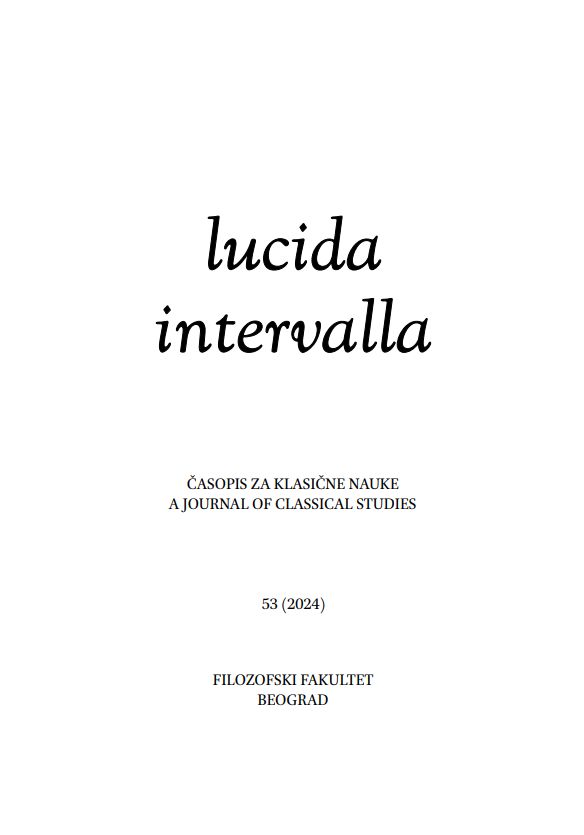Лаида из Коринта – хетера и хероина
Lais of Corinth – a hetaira and a heroine
Author(s): Mirko ObradovićSubject(s): Cultural history, Ancient World
Published by: Филозофски факултет, Универзитет у Београду
Keywords: Lais; Corinth; hetairai; prostitution; heroization; tradition
Summary/Abstract: The paper discusses various testimonia from numerous sources about Lais of Corinth, a famous hetaira from the classical period (5th–4th century BC). Although the number of extant sources concerning Lais, celebrated for her beauty and her love skills, is measured in the hundreds of references and is perhaps greater than that of any other known sex worker in Greek antiq- uity, the analysis of the sources shows that little can be reliably said about Lais from a historical point of view. Some scattered references in ancient au- thors and contradictory details of the life of the hetaira Lais are undoubtedly historically inaccurate, and others are difficult to date. This has led modern scholars to identify more Laises, distinguishing, for example, the “older” from the “younger” Lais or introducing even the “third” Lais – all of them in the short period between the late 5th and the second half of the 4th century BC. This paper argues that the identification of several different historical Laises from the classical period is a modern construct unsupported by ancient sources. Although the name Lais was undoubtedly a popular name for hetairai, there is no conclusive evidence that there were more Laises as famous hetairai in the classical period. No ancient author, ranging from roughly contemporary period to late antiquity, mentions more than one Lais; sources know of only one hetaira named Lais, famous and unique enough. The only exception might be Athenaeus, who once lists among the hetairai that the Alcibiades took with him a certain Damasandra, the mother of “the younger Lais” (Ath. 13.34). This, however, is not enough to assume the existence of two or more historical Laises in the classical period. In addition, what leads modern scholars to assume the existence of more than one Lais in the classical period also concerns the question of her final resting place. Several sources locate her grave near the shrine of Aphrodite Melainis in Corinth, but there was also the other one in Thessaly. There is a very strong tradition that the hetaira Lais of Corinth died in near the Peneius river in Thessaly, where a tomb with a funerary monument was erected in her honor. On the other hand, the part of the tradition that describes her violent death in Thessaly, indeed in the temple of Aphrodite, was likely added later explain her heroization, because a heroic death and sacrifice are expected from a hero. In this context, the erection of Lais’s Corinthian tomb in the sanctuary of Aphrodite Melainis coincides with her heroization. Similarly, the monument in the form of a lioness on a pedestal holding a ram in her forepaws, likely from the Hellenistic period but known from the early Roman Empire, commemorates this heroization. The tomb and the lioness monument, symbolizing Lais, became landmarks of Corinth, attracting visitors, pilgrims, and tourists for centuries. The pride of Roman Corinth’s citizens in their most famous hetaira and the monument erected in her honor is particularly evident in the city’s coins from the early Empire (2nd–3rd century AD), which feature the lioness on a pedestal and were minted on several occasions.
Journal: Lucida intervalla
- Issue Year: 2024
- Issue No: 53
- Page Range: 29-57
- Page Count: 29
- Language: Serbian

